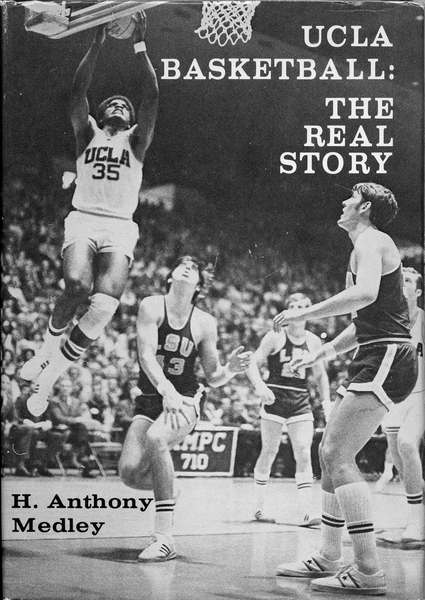|
Sports Medley: Baseball’s Best Pitchers 11 Jul 16
by Tony Medley
Last year I promised to follow up on my article of best baseball players
with one naming the best pitchers, so here it is. As with that article,
the “Koufax Rule” will apply. This says that a player may be judged by
his five or six consecutive best years in addition to the totality of
his career. Sandy Koufax had six undistinguished years but completed his
career with six of the best years any pitcher has ever had. So if he is
to be considered on those years, so should others.
Excluded from consideration were all pitchers who played the vast
majority of their careers during the PED era, which is roughly
1980-2005. Also excluded are pretty much all the pitchers who pitched in
the dead ball era prior to 1920 (except for Walter Johnson) when it was
a completely different game, with batters whose prime idea was to put
the ball in play and avoid strikeouts. Maybe in a future article I will
include pitchers like Christy Mathewson, Cy Young, Grover Cleveland
Alexander, Eddie Plank, and others whose records were remarkable.
Today’s pitchers like Clayton Kershaw (who averages less than two
complete games, herein “CG,” a year) are not included here because
modern pitchers apparently are physically incapable of throwing complete
games and I want my starting pitcher to finish the game.
Here is my list of the top ten, which is based on whom I would want
pitching in the most important game of the year:
-
Koufax (1961-66: 129-47, ERA 2.19, CG, 115): He was indomitable from
1961-66. You had to see him to appreciate his dominance. He had one
of the fastest fastballs extant and a sharp breaking curve to go
with it.
-
Warren Spahn (363-245, ERA 3.09, CG 382): Spahnie didn’t win his
first game until he was 25 years old due to service in WWII, but he
went on to win 363 games. In addition to being the best pitcher in
baseball almost his entire career, he had the best move to first
base anyone has seen before or since, was the best fielding pitcher,
and the best hitting pitcher of his era (Don Newcombe to the
contrary notwithstanding).
-
Bob Gibson (251-174, ERA 2.91 CG 255). Gibby was nearly as
unhittable as Koufax and had similar ERAs. In 1968, his ERA of 1.12
is still the major league record for the post-deadball era.
-
Walter Johnson (417-279, ERA 2.17, CG 531): Although toiling in an
era when people didn’t strike out (1907-27), Walter was almost
invincible with an underhanded style that produced the fastest
fastball of his era and struck out 3,509 batters. He threw more
shutouts (110) than anyone else in history and he had to because he
was playing for Washington, which prompted the conflation of the
phrase about our first President, as follows, “Washington, first in
war, first in peace, and last in the American League.”
-
Lefty Grove (300-141, 3.06 ERA, CG 298): He has the highest winning
percentage of all the pitchers who have won 300 games and he won the
ERA title 9 times.
-
Carl Hubbell (1933-37: 115-50, ERA 2.52, CG 114: Lifetime; 253-154,
2.94 ERA CG 260): While Hubbell’s main pitch was the mystifying
screwball (which breaks the opposite way from a curve ball), it cut
his career somewhat short because it was so hard on his arm. Hubbell
is best known for striking out five Hall of Famers in a row (Ruth,
Gehrig, Foxx, Simmons, and Cronin) in the 1934 All Star Game.
Yankees pitcher Lefty Gomez always held it against his catcher, Bill
Dickey, who singled to break the string before Gomez also struck
out. Gomez said had Dickey struck out, too, Lefty’s name would
forever have gone down in history when people said that Hubbell
struck out seven Hall of Famer batters in a row, Ruth, Gehrig, Foxx,
Simmons, Cronin, Dickey, and Gomez. Lefty’s lifetime batting average
was .147.
-
Steve Carlton (329-244, 3.22 ERA, CG 254): Like Johnson, Carlton won
most of his games pitching for a horrible team, the woeful Phillies.
In 1972 he was 27-10 for a last place team, accounting for almost
half of his team's wins.
-
Tom Seaver (1967-77: 203-113, ERA 2.48, CG 170): He succeeded Koufax
as the most dominant pitcher in baseball with three ERA titles and
he was the strikeout leader five times.
-
Bob Feller (1939-47 with four years out for WWII, his 8 decisions in
1945 are not counted here: 120-59, ERA 2.68, CG 139): Bob was the
Koufax of the ‘30s & ‘40s with the same pitches. For many years he
held the record for most strikeouts in a nine inning game, 18, which
Koufax equaled and a few others have exceeded since. But Feller was
striking out players who didn’t strike out nearly as much as the
hitters today.
-
Dizzy Dean (1932-37: 133-75, ERA 2.99, CG 124): Ol’ Diz, the last NL pitcher
to win 30 games, was clearly one of the best of all time until he
broke his toe after being hit by a line drive from the bat of
Cleveland’s Earl Averill in the 1937 All Star game and tried to come
back too soon. Favoring his toe, he injured his arm and was never
the same.
|
